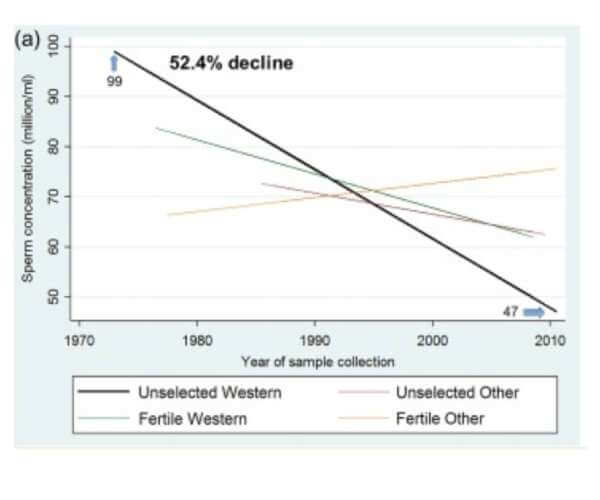Male Factor Fertility 101
By Dr. Aisling Lanigan, ND
Fertility is often thought of as a women’s issue.
As a Naturopathic Doctor with a focus on fertility, I can count on one hand how many times I have seen a male partner before a female partner over the past 10 years.
At Flourish, we frequently need to convince our female patients to have their partners’ semen tested. Women are going for lab work on multiple days of their cycles, doing uncomfortable procedures like trans-vaginal ultrasounds or down-right painful sonohysterograms. Meanwhile, it is pulling teeth to get men to provide a semen analysis, which can often be done from the comfort of their own home.
Male factor Fertility contributes to 50% of the causes of sub-fertility among heterosexual couples.
Male Factor Fertility is around 1/3 of the reason couples require assisted reproductive technology (ART) or need to visit a fertility clinic. When it comes to the cause of subfertility it has been found to be 1/3 female factor, 1/3 male factor and 1/3 combined.
We have steadily lowered our expectations for male fertility since 1940.
- In 1940 a “normal” semen analysis was sperm count 113,000,000+ and semen volume 3.40 mL+
- In 1990 a “normal” semen analysis was sperm count 66,000,000+ semen volume 2.75 ml+ and 30%+ normal sperm
- In 2015 a “normal” semen analysis” was sperm count 39,000,000+ semen volume 1.5mL+ and 4%+ normal Sperm
That was not a typo–4% normal sperm is now considered to be a perfectly normal semen analysis.
The below line graph represents the significant decline of sperm from 1970-2010

We don’t understand why there has been such a dramatic decline in sperm in the past 50 years but the leading theories are obesity, poor diet and exposure to environmental toxins.
Preconception care for men is just as essential as it is for women. The life-cycle of sperm is about 65 days, meaning new sperm are created and mature over a 2-3 month period. We have this critical window of 2-3 months prior to conception to optimize sperm health. Preconception care for men sets the stage for faster time to conception, a pregnancy with fewer complications and ultimately the birth of a healthy baby.

We are frequently referred patients from fertility clinics who have been deemed to have poor egg or sperm quality. The fertility doctors know that better quality eggs and sperm improve fertility outcomes and much of unexplained infertility relates to poor quality of egg and sperm.
At Flourish we optimize male fertility in the preconception window through a 3 pillar approach: Nutrition, Lifestyle and Key Nutrients.
The most evidence-based approach to fertility nutrition for men and women is the Mediterranean diet, focusing on:
- Daily consumption of: vegetables, fruits, whole grains, nuts + seeds, extra virgin olive oil and plant based protein like: legumes, beans, lentils etc.
- Adding in fish + seafood, dairy and poultry (chicken, turkey) a few times a week
- Limiting red meat, refined sugar and processed food
If you are interested in learning more about how to optimize sperm, our men’s health-focused ND, Dr. Melissa Descoteaux, is presenting a free webinar, Flourishing Sperm 101 on Tues, Nov 15th at 8pm.
Dr. Mel will delve deeper into the changes we have seen in male fertility and share foundational steps to Flourishing Sperm Health.
Reference: Temporal trends in sperm count: a systematic review and meta-regression analysis

